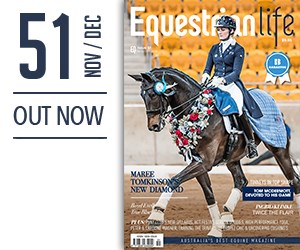
This article has appeared previously with Equestrian Life. To see what's in our latest issue, click here.
A horse and rider in action.
© Alex Pacheco
Heading off to watch your first polo match, or interested in knowing more? Here is some basic information about the sport so you can be an instant expert by the time you have your first glass in your hand.
THE SPORT
One of the oldest sports in the world, polo dates back over 2000 years, with its origins in Persia. The popular mounted game migrated eastwards and eventually established itself in India in the 16th Century and also spread to China and Japan.
From India it made its way back to England in the 1860s when British tea-planters and the British army stationed there returned home. From here it spread to other European countries with a strong equestrian tradition, including Russia, Poland, Austria and France.
Today, more than 77 countries play polo. It was an Olympic sport from 1900 to 1939 and has now been recognised again by the International Olympic Committee. Whereas the game was once primarily played by royalty and later cavalry, today the sport has become more accessible and attracts a broader spectrum of society.
The first game in Australia was played at Moore Park, Sydney, in 1874, and from there it spread throughout the country. Unlike in some other countries, in Australia the origins of the sport have always been far more humble, with the farmer being its backbone, as immortalised by Banjo Patterson’s Geebung Polo Club.
THE GAME
Polo is very straightforward as a spectator sport. There are usually six periods (chukkas) of seven minutes. There are four players in each team. The No. 1 and No. 2 are basically forwards. The No. 3 and No. 4 are equivalent to five-eighth and back in Rugby. The players should mark their opposite number; that is the No. 4 should mark the No. 1, preventing him from scoring by hooking and riding off. There is no ‘offside’ rule. The rules are common sense based on a player having the ‘right of way’ in order to eliminate danger.
Therefore, no player shall play with his left hand. Play starts from a line up in the centre by one of the two umpires throwing the ball.
The team that score the most goals wins – behinds do not count. The umpires will award penalties depending upon the severity of the infringement. There are varying degrees of penalties:
| Penalty I | A goal is signalled & a throw-in occurs 10 years out from the penalised team's goal mouth |
| Penalty II | 30 yards free hit |
| Penalty III | 40 yards free hit |
| Penalty IV | 60 yards free hit |
| Penalty V (a) | A free hit on the spot |
| Penalty V (b) | A free hit from the middle of the ground |
THE LANGUAGE
Handicap
All registered players are rated on a scale of –2 to 10 (the higher the better). The handicap of the team is the sum total rating of its players, and in handicap matches the team with the higher handicap gives the difference in ratings to the other team.
Bump
A player is permitted to ride into another player so as to spoil his shot. The angle of the collision must be slight causing no more than a jar. The faster the horse travels, the smaller the angle must be. A good bump can shake your dentures loose.
Boards
The sideboards will not exceed 28 cm high: the boards are positioned along the sidelines only.
Chukka
Also called a period. There are six chukkas in a polo game (four in arena polo and low goal polo) each lasting 7 minutes plus up to 30 seconds in overtime. If, during the 30 seconds, the ball hits the sideboards or goes out of bounds, or if the umpire blows his whistle, the chukka is over. There is no overtime at the end of the sixth chukka unless the score is tied, at that time a seventh chukka will be played until the first goal is scored. A player returns to each chukka on a different horse. Although he may rest one for a chukka or two and play him again.
Field
Length – max 275 metres, min 230 metres
Width – max 180 metres unboarded and 150 metres boarded
Goal posts
The goal posts, which are collapsible on severe impact, are 7.3 metres apart and 3 metres high.
Goal
Any time a ball crosses the line between the goal posts, it is considered a goal regardless of whether a horse or a mallet cause the ball to go through. In order to equalise turf and wind conditions, the teams change ends after every goal scored.
Ponies
The best polo ponies are of thoroughbred blood whose main qualities are heart, speed, wind, stamina and the ability to accelerate, stop and turn quickly, and whose temperament is amenable to the rigors of the game.
There is no height limit for the horses, although most are between 15 and 15.3 hands. The age of a pony is generally between 5 and 15 years. Players concede the pony accounts for up to 80% of their game.

Thanks to Polo Enterprises and Paspaley Polo in the City for providing this information.
For further information about the sport, visit www.polointhecity.com.
Images subject to copyright.
READ THE LATEST NEWS ARTICLES HERE
https://www.equestrianlife.com.au/articles/Dummies-Guide-to-Polo

